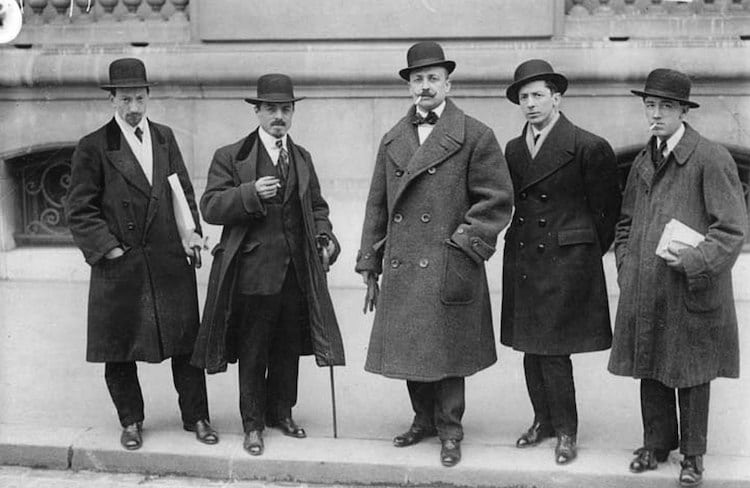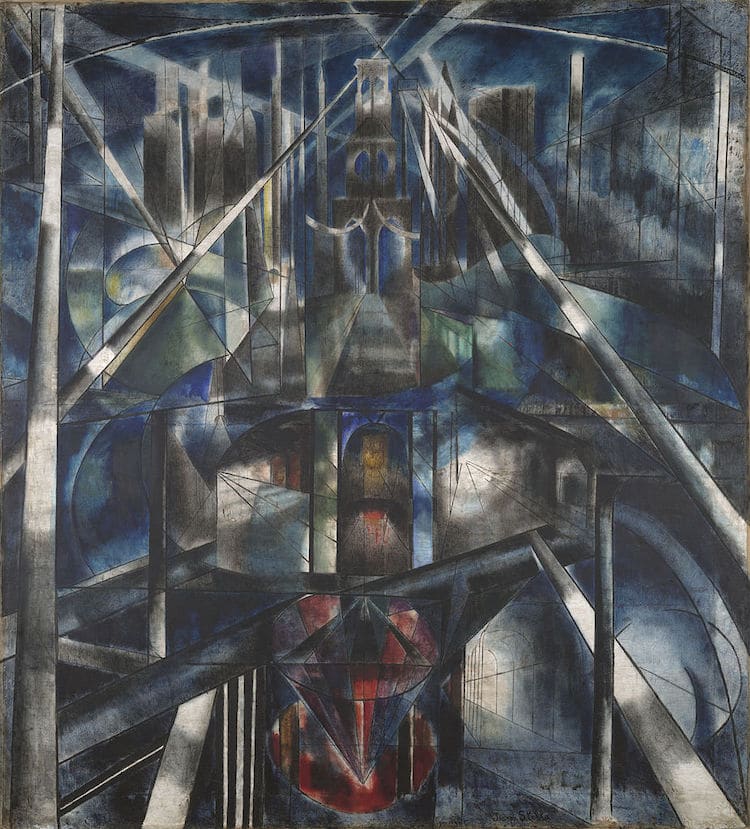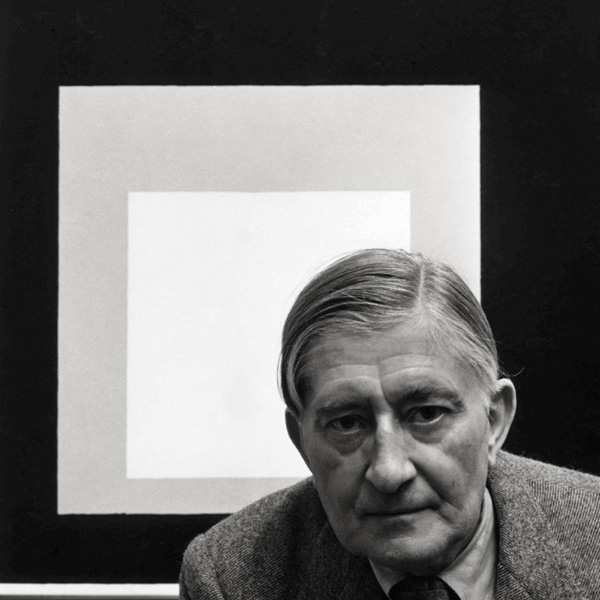
“Unique Forms of Continuity in Space” by Umberto Boccioni. 1913. (Photo: Wikipedia)
Fascinated by new industry and thrilled by what lay ahead, the early 20th-century Futurists carved out a place in history. Growing out of Italy, these artists worked as painters, sculptors, graphic designers, musicians, architects, and industrial designers. Together, they helped shape a new, modern style of art that still has staying power today.
The Futurists were revolutionaries, members of an avant-garde movement that sought to free itself from the artistic norms of the past. Through frequent, well-laid-out manifestos, they were able to spread their ideas widely and enjoyed great success prior to World War I. This group firmly looked forward and couldn’t get enough of what they saw. For the Futurists, the past was something to look down on. Airplanes and automobiles symbolized the speed they craved and the dynamism with which they saw the world.
Today, the Futurist movement is known for its embracing of speed, violence, and youth culture in an attempt to move culture forward. Though the movement is probably most widely associated with Umberto Boccioni’s sculpture Unique Forms of Continuity in Space, there’s a lot more to explore.
The Origins of Futurism

Italian futurists Luigi Russolo, Carlo Carrà, Filippo Tommaso Marinetti, Umberto Boccioni and Gino Severini in front of “Le Figaro,” Paris, February 9, 1912 (Photo: Wikipedia)
Futurism was founded in Milan by the Italian poet Filippo Tommaso Marinetti. He published his Manifesto of Futurism in 1909, first in the La gazzetta dell’Emilia and then in France’s daily newspaper Le Figaro.
This initial manifesto laid out the Futurist’s disdain for the past, stating “We want no part of it, the past, we the young and strong Futurists!” In the text, it’s also clear that Marinetti wishes to reestablish Italy as a new cultural center. Italy, which was only unified in 1870, was still basking in the glory of the ancient Roman Empire and the Italian Renaissance. For the Futurists, this wasn’t enough.
In fact, Marinetti was through with the past, writing, “We will free Italy from her innumerable museums which cover her like countless cemeteries.” Futurists saw much more beauty in the great industrial discoveries of the 20th century than classical painting and sculpture. In the manifesto, they outright state that modern industrial inventions are much more appealing: “We declare…a new beauty, the beauty of speed. A racing motor car…is more beautiful than the Victory of Samothrace.”
The manifesto also promoted violence and the necessity of war, but interestingly did not discuss or outline any rules for the visual arts. That would come later, with the 1914 Technical Manifesto for Futurist Painting. It was just one of many manifestos that they would produce, as the Futurists wrote about all sorts of topics, from architecture and religion to clothing.

“Dynamism of a Cyclist” by Umberto Boccioni. 1913. (Photo: Wikipedia)
Characteristics of Futurist Art
As the early manifesto did not directly address the artistic output of Futurism, it took some time before there was a cohesive visual. A hallmark of Futurist art is the depiction of speed and movement.
In particular, they adhered to principles of “universal dynamism,” which meant that no single object is separate from its background or another object. “The sixteen people around you in a rolling motor bus are in turn and at the same time one, ten four three; they are motionless and they change places. … The motor bus rushes into the houses which it passes, and in their turn the houses throw themselves upon the motor bus and are blended with it.”
This is best exemplified in Giacomo Balla’s Dynamism of a Dog on a Leash, where the motion of walking the dog is shown through the multiplying of the dog’s feet, leash, and owner’s legs. Urban scenes such as this were typical subject matter for the Futurists, who saw the city environment as the apex of their ideals.

“Dynamism of a Dog on a Leash” by Giacomo Balla. 1912. (Photo: Wikipedia)
Umberto Boccioni explained the principles of Futurist art by distinguishing it from another avant-garde movement—Impressionism. “While the impressionists paint a picture to give one particular moment and subordinate the life of the picture to its resemblance to this moment, we synthesize every moment (time, place, form, color-tone) and thus paint the picture.”
The Futurists were also highly influenced by Cubism, which was first brought to the group by Gino Severini. Severini came into contact with the style while visiting Paris in 1911 and introduced its use of broken color fields and short brushstrokes to the Futurists. The core artists used these techniques to create even more dynamic scenes of everything from cyclists to dancers to cities under construction.
Eventually, Boccioni took his work from two dimensions to three dimensions and created the acclaimed sculpture Unique Forms of Continuity in Space. Aerodynamic and fluid, it’s emblematic of the painter’s new obsession with sculpture and its ability to suggest motion. Interestingly, the sculpture was never cast in bronze during Boccioni’s lifetime. His original plaster cast is located in São Paulo’s contemporary art museum. Several bronze casts were made beginning in 1931, with one of the original casts acquired by New York’s MoMA.

“Dynamic Hieroglyphic of the Bal Tabarin” by Gino Severini. 1912. (Photo: Wikipedia)
Female Futurist Artists

F.T. Marinetti and Benedetta Cappa by Filippo Tommaso Marinetti (Photo: Public domain, via Wikimedia Commons)
Although Futurism was remembered as a movement of violence, Fascism, and “disprezzo de la donna” (“scorn for women”), there were a few female Futurists that proved the contrary:
Gianni Censi was a famous Italian dancer and choreographer who moved and danced in an entirely new way. She contorted her body by dramatically arching backward and forwards in a mechanical motion.
Benedetta Cappa was an artist who worked across a range of media, from ceramics and glass to paint and metal. She was inspired by her first-hand experience flying in a plane and set out to overcome “earthbound limitations” through paint.
Bice Lazzari painted with what she called the “absolute colors”—black, white, red, and yellow. While living in Rome with her architect husband, she seemed to have found herself at the center of the Futurist artistic society.
Decline and Legacy of Futurism

“Brooklyn Bridge” by Joseph Stella. 1919-1920. (Photo: Wikipedia)
The beginning of World War I signaled the end of the original Futurist group. Boccioni created only one painting during the war and was drafted into the Italian army. It was a huge blow for the group when he was killed in 1916 during a training exercise.
After the end of the war, Marinetti revived the movement. This period was later called Second Futurism which became associated with Fascism. Similar to many Fascists, they felt that Italy was a country divided between the industrialized north and agricultural south and wished to build a bridge to bring them together. Marinetti’s Futurist Political Party was actually absorbed into Benito Mussolini’s Fascist Party, though Marinetti would later disagree with some of their principles and withdraw from political life.
Post-World War I Futurism was dedicated to new types of expression. In particular, Aeropainting became a popular style in the 1920s. It combined the love for flight with aerial landscapes and was often used in propaganda. Not limited to landscapes, Aeropainting was actually varied in its subject matter and remained popular until 1940.
After the defeat of Mussolini and Marinetti’s death in 1944, Futurism as a formal movement was dead. However, it remained highly influential for subsequent 20th-century art movements like Dada, Surrealism, and—in terms of design—Art Deco.
Today, works by Futurist artists can be found in major collections around the world and are essential to understanding early 20th-century culture.

“Speeding Motorboat” by Benedetta Cappa. 1923. (Photo: WikiArt)
This article has been edited and updated.
Related Articles:
20 Revolutionary Art Movements That Have Shaped Our Visual History
How the Groundbreaking Realism Movement Revolutionized Art History
Exploring the Cutting-Edge History and Evolution of Collage Art






















































































